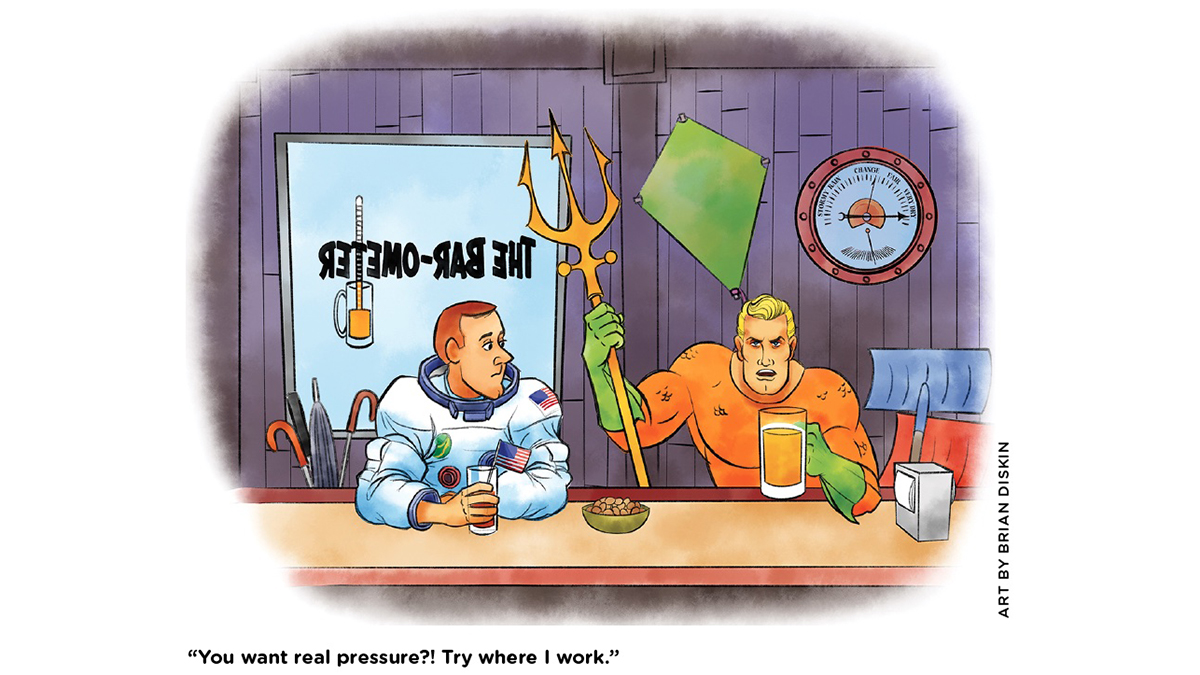science 101
Q: Do you have a weather-related activity that my students would enjoy?
A: Ask, and ye shall receive. One of the most important ideas related to weather is air pressure. But, before we get to that, we’ll want to make sure everyone understands that there is actually air in what appears to be an empty container. Give each student (or group of students) two empty plastic bottles, one with no cap, and the other with the cap tightly screwed on. Ask them to squeeze the bottles. What do they observe? Why can they squeeze and collapse one bottle easily but not the other? Let them discuss this among themselves. It’s always better for the students to first discuss with each other and see how much they can figure out through discussion with other students. This also models the way real scientists discuss and collaborate with each other.
Something is preventing the capped bottle from being crushed. What could it be? That’s right, air! The air is in the way, and since the cap is on the bottle, the air can’t get out of the bottle. But when they squeeze the uncapped bottle, the air easily gets pushed out of the way—out of the bottle—as they crush it.
The astute student may notice that even the capped bottle can be squeezed a little. Indeed, air can be squeezed or compressed to a degree. But, in this case, it can’t get out of the way enough for the bottle to be completely crushed.
A similar, easy investigation is to give each student a mostly inflated balloon and ask them to try to squeeze it into a smaller ball. If the balloon doesn’t burst, there’s nowhere for the air to go, and they can’t squeeze it very much without part of the balloon escaping from between their hands. As the students squeeze either the capped plastic bottle or the balloon, they can feel it pushing back, preventing them from squeezing it any further. That’s the air pushing back! They’re feeling air pressure!
Atmospheric Pressure and Barometers
The air that surrounds us—and surrounds the Earth—is called the atmosphere. So, the pressure in the air surrounding us is called atmospheric pressure. An instrument for measuring atmospheric pressure is called a barometer. Changes in air pressure can tell us whether it’s likely that we’ll have dry weather or stormy weather. There are many different kinds of barometers, and they all have some way of indicating how hard the air is pressing on something, that is, how high or low the air pressure is.
You can make an actual barometer with your students! In fact, if you have enough materials, each student or group of students can make their own. The materials needed to make a barometer include: a jar or can (the taller the better, but any size will work), a straw or coffee stirrer, a toothpick or a paper clip (opened up to form a straight wire), a rubber band, tape, glue, and a metric ruler (showing millimeters). Start by cutting off the neck of the balloon and discarding it. Stretch the remaining, large part of the balloon over the top of the jar or can (Figure 1), and secure it in place with the rubber band and/or tape. There should be a nice tight seal.
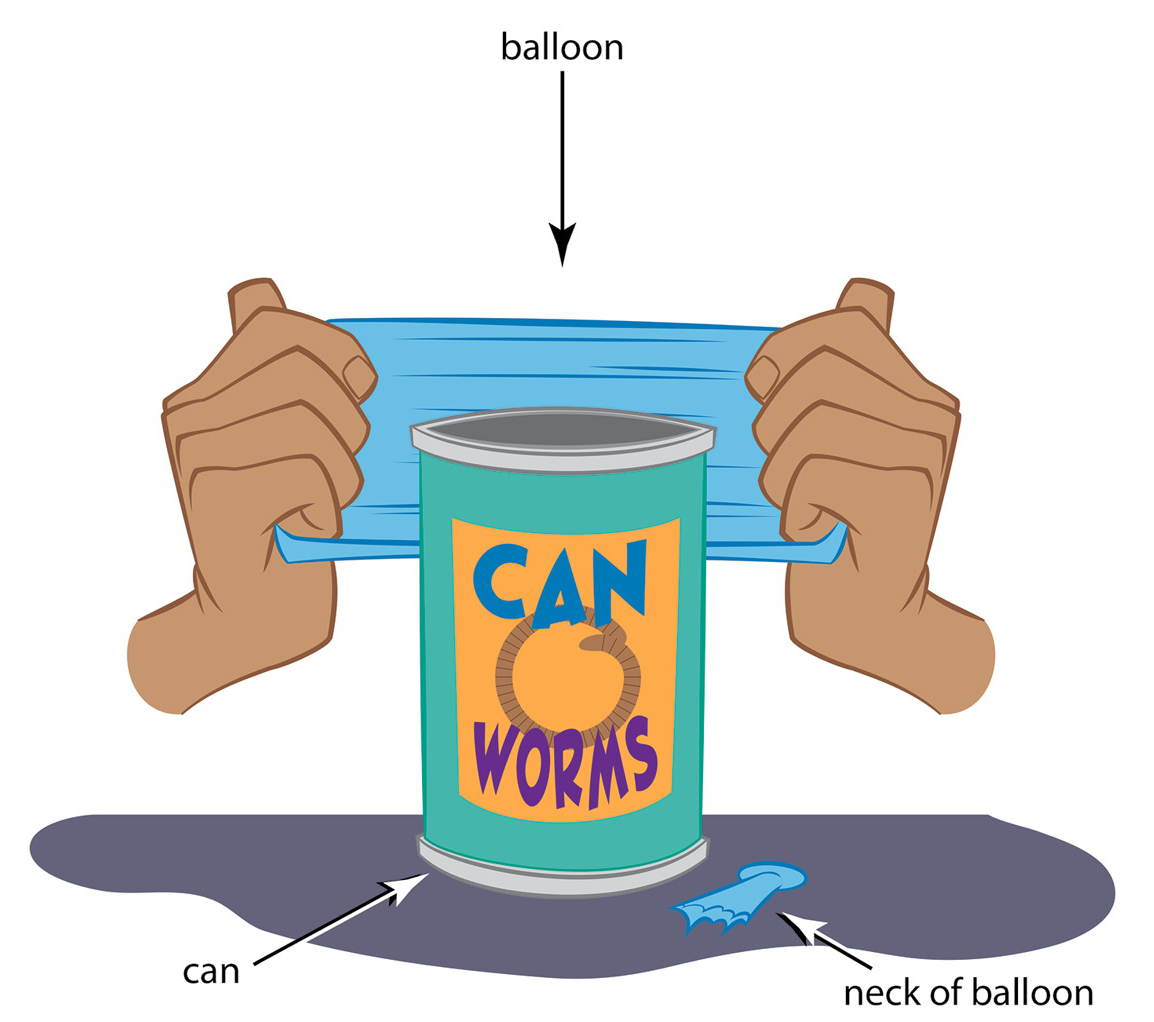
After cutting off the knot, stretch the balloon over a jar or can.
Stick part of the toothpick or straightened paper clip in the end of the coffee stirrer or straw. If it’s not a tight fit, you can glue it in place. Or you can tape the toothpick or paper clip to the outside of the straw. There should be at least an inch of toothpick or paper clip extending out from the straw.
Glue the straw or coffee stirrer to the balloon, so that the plain end of the straw is at the center of the balloon, and the toothpick or paper clip is extending way out to the side (see Figure 2). Place the whole assembly on a shelf or table next to a wall. Tape the ruler to the wall (with the low numbers at the bottom, see Figure 3) and adjust the can so that the toothpick or paper clip is in front of the millimeter markings on the ruler, but not touching the ruler. See instructions below if your students cannot yet read measurements on a ruler. You’ve now completed the construction of your barometer. It should be located in a place where it can be left for many days or weeks or more.
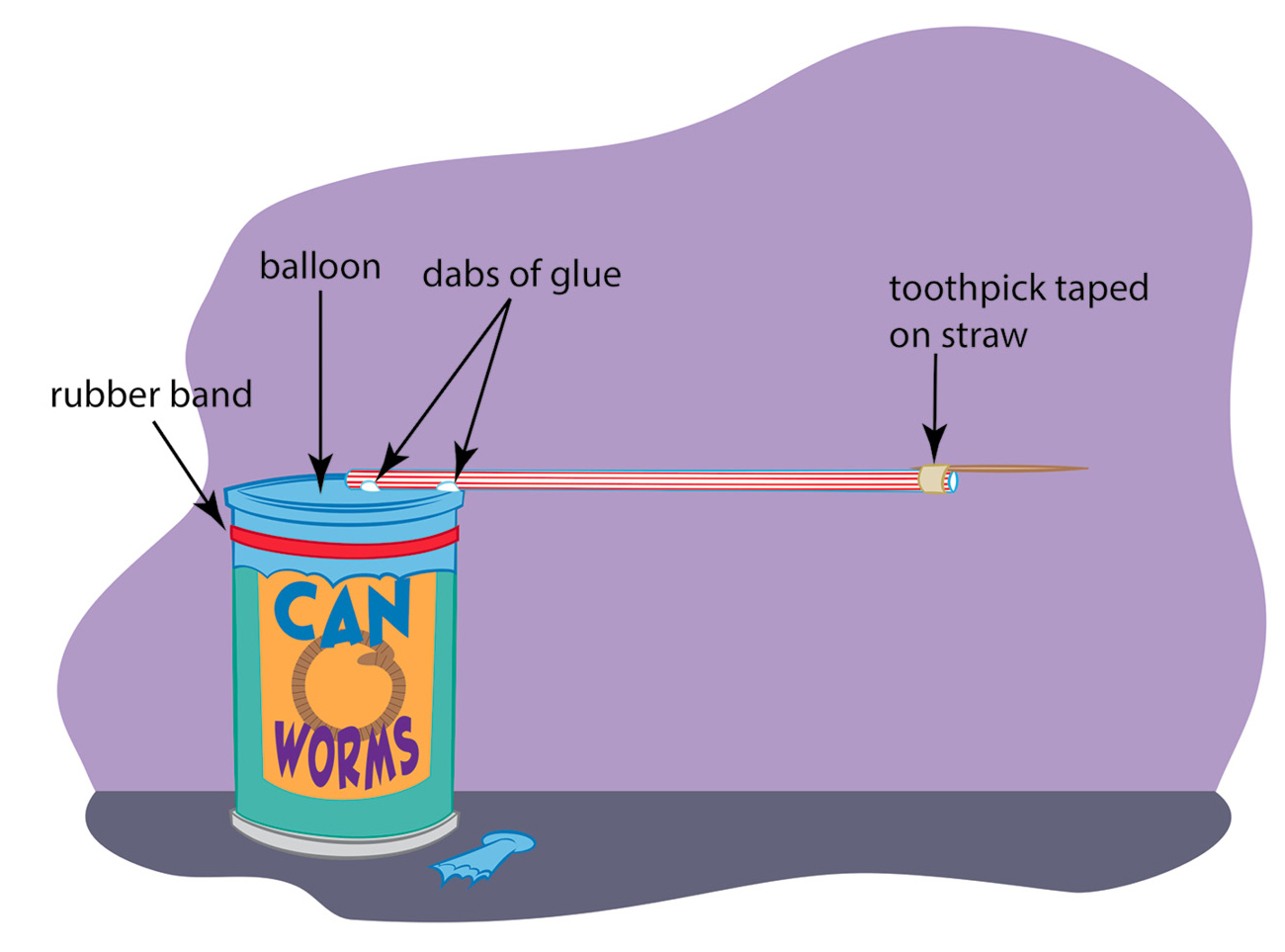
A barometer made from simple materials
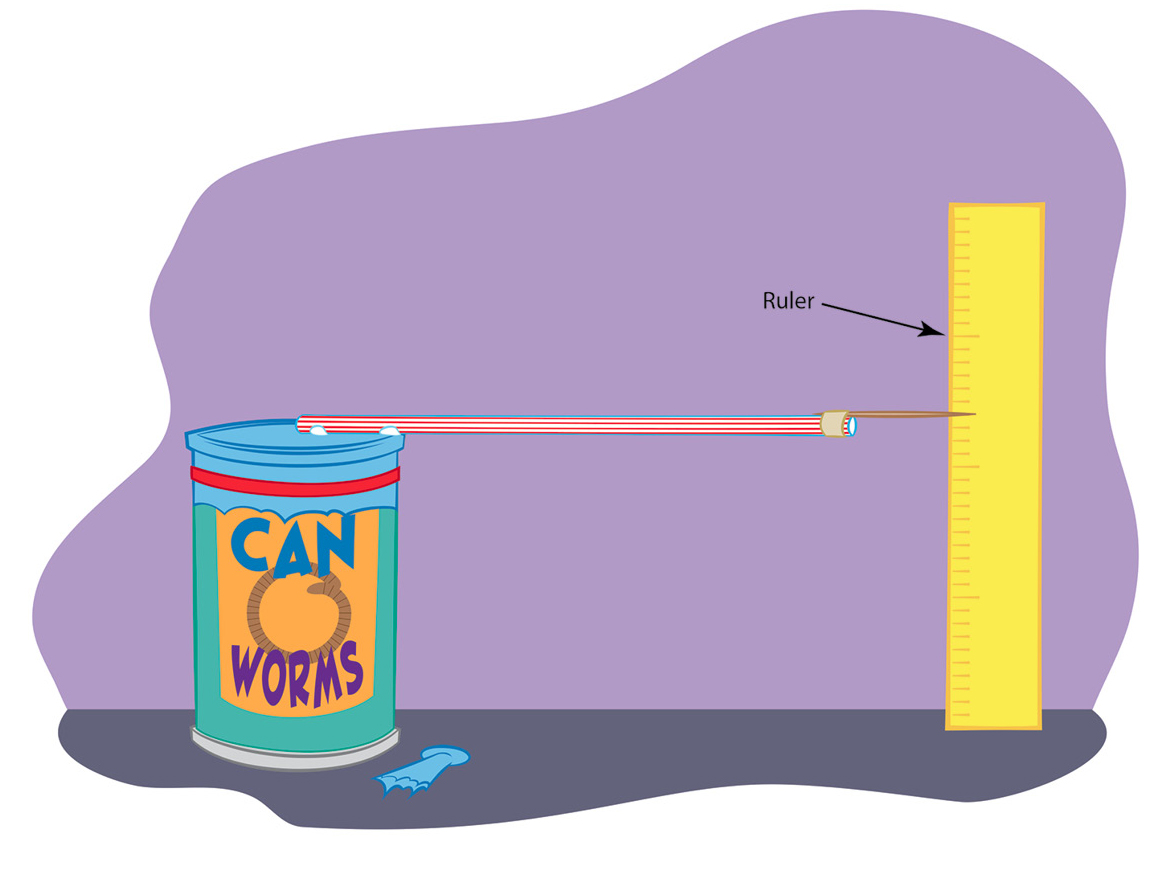
With the ruler taped to the wall, the pointer on the barometer can indicate changes in air pressure.
How the Barometer Works
When the atmospheric pressure increases, the air pushes down on the balloon, causing the pointer end of the straw to tilt up to a higher number of millimeters. When the atmospheric pressure decreases, the higher air pressure in the can is able to push the balloon up, causing the straw to tilt down and point to a lower number of millimeters.
Increasing atmospheric pressure is associated with clear skies and dry weather. Decreasing atmospheric pressure is associated with wet weather. Let’s see whether your students can discover this correlation.
Data Collection
Each day, a student should note the date and the number of millimeters that the toothpick or paper clip is pointing to. A data collection sheet might look like that in Figure ٤. Older students could add a column for the actual air pressure as determined from a weather app or website. Then they can see the correlation between the actual air pressure and the number of millimeters shown by the pointer on their barometer.
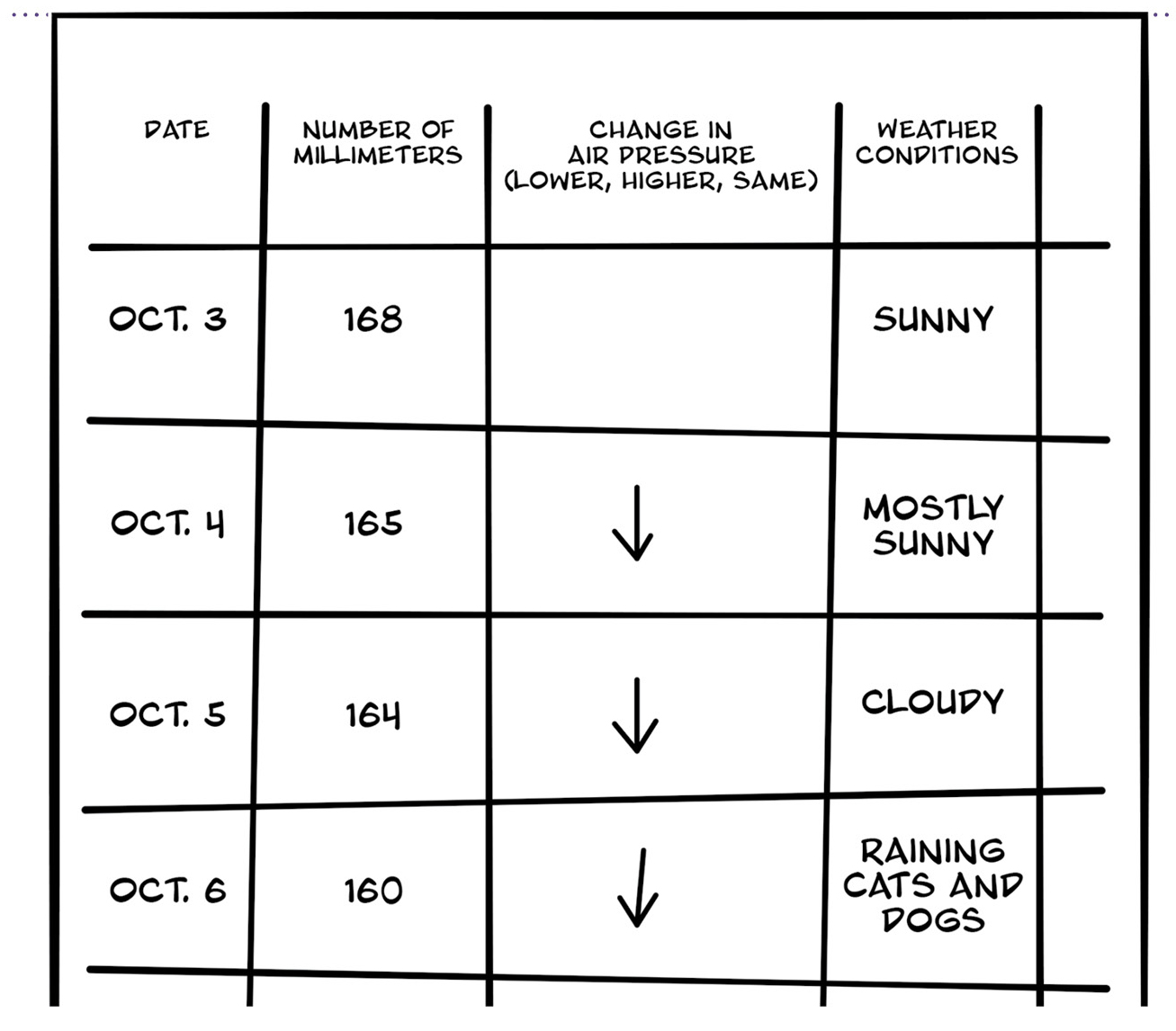
Data sheet for recording changes in air pressure using a barometer.
For the lower grades, where students are not yet ready to read a ruler, you can just have them mark the position of the pointer on a piece of paper taped to the wall (see Figure 5). They can also put a “sunny” or “cloudy” or “rainy” symbol next to the date.

The position of the pointer can be marked on the paper.
After many days or weeks collecting data, ask the students whether they see any connection between the barometer rising or falling and the weather. After a while, they might be able to predict whether sunny or rainy weather will be coming.
Why is there a connection between low pressure and rainy weather? Here’s where the science comes in, providing an explanation for what we observed. Sunlight heats different parts of the Earth’s surface by different amounts. Where the air is heated more, the molecules of air move faster, bounce off one another with more energy, and push one another apart. So, the heated air expands and therefore has a lower density. Lower density air will rise because of its buoyancy. (This is why warm air rises. See the Science 101 column on buoyancy under Online Resources.) The rising air moves up and then eventually spreads out horizontally, and you end up with fewer air molecules pushing down on the ground in that region, resulting in lower air pressure. That’s the low pressure you measured with your barometer!
Something else happens as that rising, low-pressure air moves upward: It cools! Have you ever gone to the top of a mountain and noticed that it’s cooler there? When the air rises and gets cool enough, water vapor will condense out of the air and form clouds. This is the same phenomenon as seeing your breath on cold days (which I discussed in the January 2020 Science 101 column; see the link below in Online Resources). And that’s why falling air pressure is often associated with cloudy or rainy weather.
Never stop learning.
Online Resources
Science 101: How can you weigh less without losing mass? https://www.nsta.org/science-and-children/science-and-children-august-2019/science-101-how-can-you-weigh-less-without
Why Can I See My Breath on Cold Days? https://www.nsta.org/science-and-children/science-and-children-january-2020/q-why-can-i-see-my-breath-cold-days
Matt Bobrowsky is the lead author of the NSTA Press book series, Phenomenon-Based Learning: Using Physical Science Gadgets & Gizmos. You can let him know if there’s a science concept that you would like to hear more about. Contact him at DrMatt@msb-science.com
Earth & Space Science Environmental Science Instructional Materials Teaching Strategies Elementary



